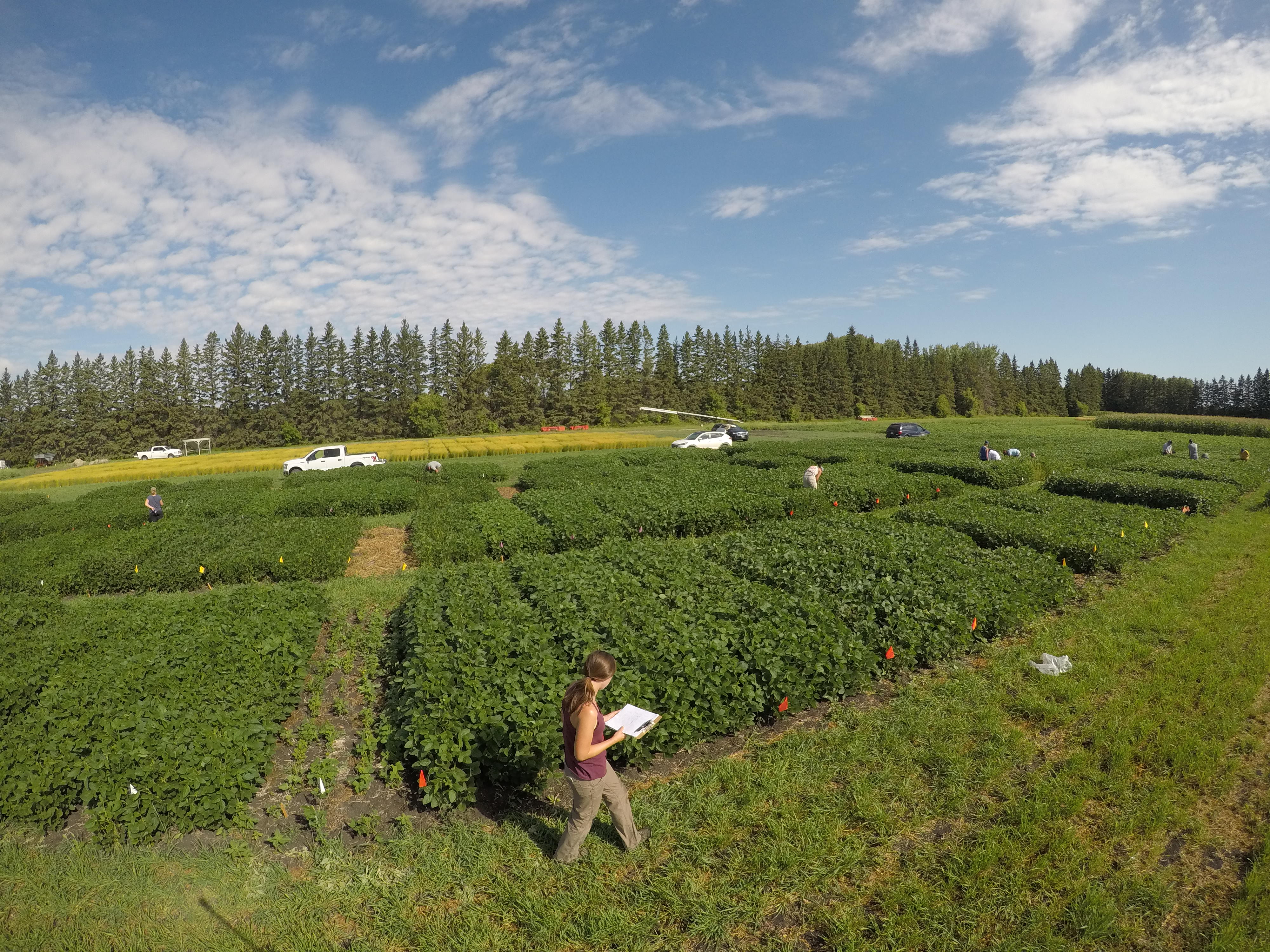The first summer of a research program is like farming new land on the farm – you’re pressed to figure out drainage, soil and crop history before seeding and you expect some surprises to show up mid-way through the season. Or maybe it’s more like buying a farm all together, because we also had new (to us) equipment to use and new people to work with.
This first field season was really about getting to know the lay of the land, people, equipment and infrastructure resources at each research farm.
The first challenge was a very dry spring – at Portage, we were dealing with a dry, cloddy clay loam soil. Seeding at 2 inches was required for dry beans to achieve good seed-soil contact away from the clods. In another trial, corn and beans were seeded too shallow and were re-seeded in June.
It takes a dry year to really understand the importance of seeding depth and moisture holding capacity of soil. It turned out to be a good year to start a soybean seeding depth trial at Carman and Arborg where we compared seeding depth from 1/4 to 2.5 inches.
Equipment can be a limiting factor in achieving optimum agronomic practices, and I’ve often suggested that we should collaborate more with engineers and equipment manufacturers. Just recently do we see more options for narrow row planters, tillage and residue management, mechanical weed control, dual and autonomous systems. Farmers are often those creating innovations and modifications.
At the research farm, we are also trying to keep pace with technology and configure equipment to meet our agronomic goals. At seeding, we were navigating row spacing, seed and fertilizer delivery options and openers for each trial. This was particularly interesting for the dry bean crop sequence trial, where we planted four crop types with three different seeders that will all be planted to dry beans next year. In September, the challenge was configuring equipment for various intercrop and relay crop combinations, with varying fertility and planting arrangements.
It may seem impractical at times, but it’s important we aren’t limited by equipment when it comes to designing and testing cropping systems.
Harvest came along and existing plot combines turned out to be no match for dry beans. I had accurately predicted it would be difficult. Header losses were high and cylinder speed was a challenge to slow down enough to prevent cracking. To address this, we hand harvested and used our new stationary belt thresher which produced a sample worth bragging about.
Research equipment needs is an ongoing and evolving conversation – are we up to date with technology as we should be? How many units do we need? Can we transport and store them? Research farms need a combination of basic and leading edge equipment and technology, enough units to ensure timely operations for everyone and sufficient storage. It’s like a custom sprayer – who gets it before the rain?
Expansion, growth and change is often on the minds of farmers, and researchers too – for equipment but also land. On research farms, land is only available for research trials 1 in 4 years. “Break” years are used for cash cropping and are required to dilute the treatment effects that were imposed in research experiments. Most research farms have owned land that is rotated but others rent land from farmers and rotate sites each year.
With this new research program and other programs expanding, it’s apparent that resources are being stretched. But this is a good problem to have, it means that questions are being asked and we have researcher’s eager to examine them.
To be successful at field research, you need to have a similar mindset to farmers and crop advisors- working when the conditions are right – long days during seeding and harvest, early days during spraying and regular scouting when pest pressure is high. Yes, we dealt with soybean aphids too. Throughout the summer, my team was out collecting data – emergence counts, soybean growth staging, white mould ratings in dry beans, plant productivity, maturity ratings etc.
A large part of this first field season was training staff on soybean and dry bean production and experimental protocols related to agronomy. In my program, students will acquire knowledge and skills in crop production and agronomy research which will prepare them for working in the industry and on the farm.
Time this summer was divided between research sites, my office and lab, and extension events. You may have seen me in Melita, Arborg, Portage or Carman discussing the work that is underway. This fall presents a new season – it is now time to review data, reflect on the year’s challenges, brainstorm new ideas and interact with the student community. And like you, it will be important to attend meetings to share the results of my program and also to hear from others and get inspired.
The next report will bring you preliminary results of this year’s trials. In the meantime, start thinking about what meetings you will attend to connect with researchers this winter, and get inspired.
– Kristen MacMillan

